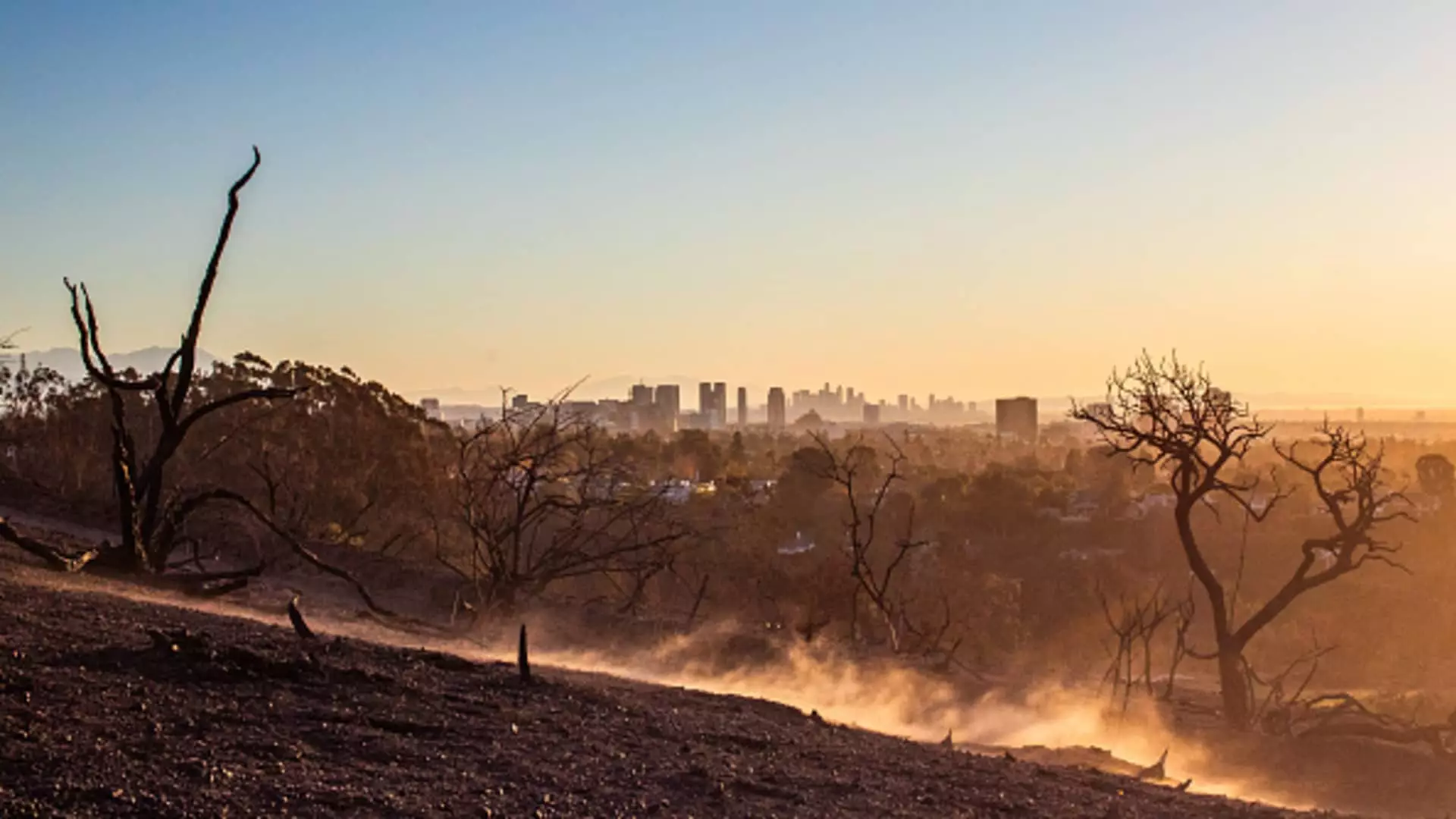As the frequency and intensity of natural disasters escalate across the United States, homeowners are bracing themselves for a wave of rising insurance premiums. The recent wildfires in Los Angeles, potentially destined to be historically significant in terms of financial losses, have further exacerbated an already strained insurance market. Analysts predict insured damages could surpass a staggering $20 billion, a burden that will undoubtedly push premiums even higher in the wake of devastation. The key question is how homeowners can navigate this landscape as they face a dual threat of natural calamities and escalating financial responsibilities.
The implications of the California wildfires extend beyond immediate property damage; they herald an alarming trend in the insurance sector. According to Patrick Douville from Morningstar, a shift towards risk-based pricing for premiums is essential. This means consumers can expect a rise in their insurance costs, which may further complicate property ownership and affordability, potentially leading some homeowners to forgo coverage altogether. The recent regulatory changes in California, allowing for rate hikes to enhance coverage in disaster-prone areas, signify the challenges that regulation presents to homeowners seeking stability amid volatility.
The situation is particularly dire for those dwelling in regions categorized as high risk. Recent analysis indicates that a single fire claim can increase premiums by nearly 29%, while two claims can skyrocket those costs by approximately 60%. This paints a stark reality for homeowners as they ponder the financial risks associated with living in these areas. Janet Ruiz from the Insurance Information Institute highlights that in order to remain viable, insurance companies must collect appropriate premiums to cover claims, further perpetuating a cycle of increasing costs exacerbated by disaster-related claims.
State-Specific Regulations: A Double-Edged Sword
One might wonder if the alarming rise in premiums is a concern that extends beyond California. Ruiz assures that while premiums in one state do not directly equate to increases in another due to localized state regulations, there is a ripple effect at play. The economists’ study from esteemed institutions reveals a troubling disconnect, indicating that when states with stringent regulations prevent companies from adjusting premiums adequately, those costs are often absorbed through rate increases in less regulated states. This raises critical questions regarding the long-term sustainability of the existing regulatory framework amidst increasingly severe natural disasters.
Holden Lewis from NerdWallet underscores the interconnectedness of state economies and the potential consequences homeowners might face in regions believed to be insulated from the brunt of wildfires or extreme weather. The implications of this interconnected scenario could lead to unforeseen premium hikes, putting stress on homeowners who had previously felt secure.
Rising Costs Beyond Natural Disasters
While wildfires serve as a current focal point, they represent just one facet of a broader trend in rising home insurance premiums. A chilling finding from the National Oceanic and Atmospheric Administration places the toll of natural disasters on the economy at $1 billion per event for 27 separate instances last year, revealing a systemic issue that transcends individual incidents. With nearly half of all homes in the U.S. now assessed as being at risk for severe weather-related damage, there remains a push for awareness regarding the essentiality of adequate coverage.
Moreover, the impact of the COVID-19 pandemic on construction costs has amplified the financial burden on homeowners. Rebuilding a home has surged from $166 to approximately $300 per square foot, adding a new layer of urgency for policyholders to evaluate their coverage limits critically. There remains an alarming trend where many homeowners are blissfully unaware of their underinsurance status, leaving them vulnerable to substantial losses in the face of a disaster.
In light of these challenges, it is fortuitous that experts like Lewis urge homeowners to reassess their insurance policies regularly. This includes obtaining updated estimates for rebuilding costs to ensure adequate coverage. Additionally, many homeowners overlook the necessity of purchasing separate flood insurance, often caught unaware that their standard homeowner’s policies do not cover such events. This underscores the vital role of yearly reviews of insurance documents, enabling consumers to align their policies with the ever-changing realities of homeownership in an increasingly volatile climate.
Consumers must take proactive measures to educate themselves about the nuances of their policies, understand the impact of their environment on insurance rates, and seek out tailored solutions that will safeguard them against potential financial hardships resulting from future natural disasters. By doing so, homeowners can forge a path toward more resilient futures, notwithstanding the challenges that lie ahead.
As the country faces the repercussions of climate change and rising natural disasters, the surge in insurance premiums highlights a pressing issue that requires immediate attention. Whether through state regulations or individual financial planning, homeowners must adapt to anticipate and mitigate the threats posed by an unpredictable climate. The collaboration between consumers and insurers will play a crucial role in shaping the future of home insurance, ensuring that all parties emerge from this crisis prepared for the uncertainties ahead.

